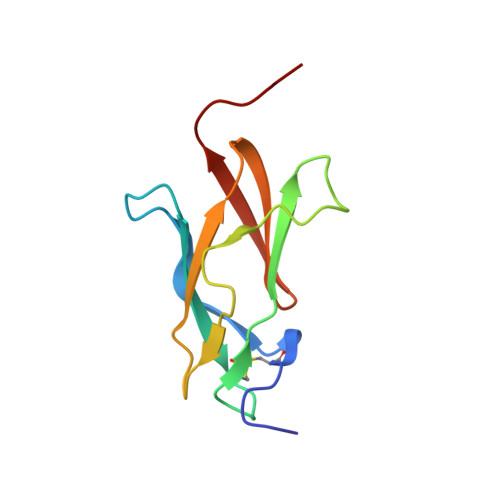A Powassan virus domain III nanoparticle immunogen elicits neutralizing and protective antibodies in mice.
Malonis, R.J., Georgiev, G.I., Haslwanter, D., VanBlargan, L.A., Fallon, G., Vergnolle, O., Cahill, S.M., Harris, R., Cowburn, D., Chandran, K., Diamond, M.S., Lai, J.R.(2022) PLoS Pathog 18: e1010573-e1010573
- PubMed: 35679349
- DOI: https://doi.org/10.1371/journal.ppat.1010573
- Primary Citation of Related Structures:
7SGT - PubMed Abstract:
Powassan virus (POWV) is an emerging tick borne flavivirus (TBFV) that causes severe neuroinvasive disease. Currently, there are no approved treatments or vaccines to combat POWV infection. Here, we generated and characterized a nanoparticle immunogen displaying domain III (EDIII) of the POWV E glycoprotein. Immunization with POWV EDIII presented on nanoparticles resulted in significantly higher serum neutralizing titers against POWV than immunization with monomeric POWV EDIII. Furthermore, passive transfer of EDIII-reactive sera protected against POWV challenge in vivo. We isolated and characterized a panel of EDIII-specific monoclonal antibodies (mAbs) and identified several that potently inhibit POWV infection and engage distinct epitopes within the lateral ridge and C-C' loop of the EDIII. By creating a subunit-based nanoparticle immunogen with vaccine potential that elicits antibodies with protective activity against POWV infection, our findings enhance our understanding of the molecular determinants of antibody-mediated neutralization of TBFVs.
Organizational Affiliation:
Department of Biochemistry, Albert Einstein College of Medicine, Bronx, New York, United States of America.














